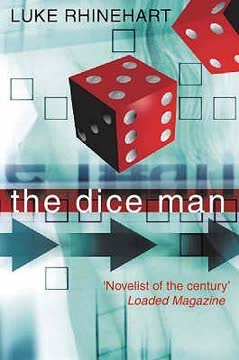Key Takeaways
1. Agreements and the Trainer Set the Stage
Werner has developed certain ground rules for the training which you have agreed to follow.
Ground rules matter. The est training begins with a strict enforcement of agreements trainees made beforehand, such as no talking, no watches, and remaining in the room. This seemingly trivial focus on rules serves to immediately confront trainees with their tendency to break agreements and highlight the mechanical nature of their behavior. The trainer and assistants maintain a neutral, often confrontational, demeanor to strip away social niceties and force trainees to confront their own reactions.
Challenging assumptions. The trainer establishes authority by declaring trainees' lives "don't work" and calling them "assholes," deliberately provoking reactions. This initial shock aims to break down trainees' intellectual defenses and belief systems, which the training posits are barriers to experiencing life fully. The trainer emphasizes that he is not there to be liked or believed, but to facilitate an experience.
Creating a space. The strict rules and the trainer's challenging style create an intense, controlled environment designed to disrupt habitual patterns. By removing familiar comforts (like checking time, talking, or leaving) and challenging self-image, the training aims to create a space where trainees can observe their automatic responses and begin to experience themselves differently. This sets the stage for the core concepts and processes to land.
2. Resistance Leads to Persistence
If you try to resist something or change something, it will become more solid.
Fighting makes it stronger. A core principle introduced early is that attempting to resist or change an experience or feeling only makes it persist. This applies to emotions like anger or fear, physical sensations like tension or headaches, and even undesirable habits. The effort to control creates the very thing one is trying to eliminate.
Acceptance dissolves. The alternative to resistance is acceptance – simply observing and being with the experience without judgment or effort to change it. This doesn't mean ignoring it, which is another form of resistance. By fully experiencing something, its hold diminishes, and it can disappear.
Paradoxical workability. This concept is presented as a paradox: the harder you try to get rid of something, the more it stays; the more you accept it, the more it dissolves. Examples from the training, like trainees' headaches or nausea disappearing when asked to simply observe the sensations, illustrate this counter-intuitive principle.
3. Experience is Reality, Not Beliefs or Thoughts
Unless a tiny glimmer of your stuckness, of the unworkingness of your lives, gets through to you, you'll continue to hide in the lies you live by, the lies which prevent your lives from working.
Living in the mind. The training argues that people live primarily in their minds, driven by belief systems, theories, and conclusions formed long ago, rather than in the realm of actual experience. These mental constructs filter and distort reality, preventing genuine aliveness.
Beliefs vs. Knowing. Beliefs are presented as the lowest form of knowing, representing uncertainty. True knowing comes from direct experience, which is beyond words and concepts. The "how to walk" or "how to sing" demonstrations illustrate that what we truly know is often inexpressible, unlike our readily articulated beliefs.
Experience is real. While society defines "reality" by physicalness, measurability, and agreement (like a bus or a blackboard), the training posits that the ultimate reality is one's own experience. The physical world is an "unreality" based on collective agreement, while individual experience, though not physical or measurable, is the true source of what is real for a person.
4. You Are the Sole Source of Your Experience
You are each the sole source of your own experience, and thus TOTALLY RESPONSIBLE FOR EVERYTHING YOU EXPERIENCE.
Beyond cause-effect. The conventional view sees life as a chain of cause-effect, where individuals are often the effect of external forces (parents, bosses, circumstances). The training challenges this "false cause" analysis, arguing that while external stimuli exist, one's experience of those stimuli is entirely self-created.
Taking responsibility. Accepting total responsibility means acknowledging that your experience of being mugged, having a lousy boss, or even a loved one's illness is your creation. This is not about blame but about recognizing one's power as the creator of their internal world.
Giving up rackets. This radical shift in perspective requires giving up "rackets" – the games people play to justify their behavior and avoid responsibility, often by blaming others. By seeing oneself as the source, the need for blame dissolves, opening up new possibilities.
5. The Mind is a Mechanical Machine
The mind is a linear arrangement of multisensory total records of successive moments of now.
Records of now. The mind is defined as a collection of complete, multisensory records of past experiences, stored linearly. These records include everything perceived (sights, sounds, smells, touch, taste) as well as thoughts, feelings, and images from specific moments.
Survival function. The primary purpose of the mind is survival – not just of the physical body, but of anything the being identifies with (ego, country, beliefs, possessions). When the being identifies with the mind itself, the mind's purpose becomes its own survival, leading it to seek agreement and prove itself right.
Stimulus-response. The mind operates mechanically based on stimulus-response, particularly in areas deemed "necessary for survival" (linked to past "number one" experiences involving pain, threat, and unconsciousness). Upsets in the present are seen as mechanical triggers of these past traumatic records, operating on an illogical identity principle (A=B=C except sometimes).
6. "Getting It" is Realizing Your Machineness
Enlightenment... is knowing you are a machine...
The cosmic joke. The culmination of the anatomy of the mind is the realization that one's life is largely mechanical, driven by the stimulus-response patterns of the survival-oriented mind. This realization, often accompanied by laughter or profound release for some, is presented as "getting it."
Acceptance is key. "Getting it" is not about changing the fact that you are a machine, but about knowing and accepting it. This acceptance dissolves the lifelong struggle to pretend otherwise, which the training posits is the source of much suffering and "unworkingness."
Nothing to get. The trainer emphasizes that there is "nothing to get" because you have always been a machine. The "getting" is simply the realization and acceptance of this fundamental state, leading to a sense of lightness and freedom from the burden of trying to be something you are not.
7. Choice is the Only Freedom
In that realm, we choose things because we choose them.
Beyond preference. While the mechanical mind operates based on preferences and past programming ("I chose vanilla because I like vanilla"), the training introduces the concept of choice as an act of pure will, independent of reasons or preferences.
Cause, not effect. Choosing because "I chose to" positions the individual as the cause of their actions, rather than the effect of their desires, history, or external circumstances. This is the realm of self-responsibility, where one is not merely run by the machine but chooses to operate it.
Choosing what is. Freedom lies not in controlling the machine or changing reality, but in choosing to accept and be with "what is." This includes choosing your feelings, your circumstances, and even your machineness. By choosing what happens when it happens, you align yourself with reality and experience a sense of power and ease.
8. Problems Are Self-Created Illusions
Your correct, intelligent, reasonable belief systems are directly related to your not getting any cheese.
Beliefs create problems. The training asserts that problems are not inherent in external circumstances but are created by one's belief systems and resistance to "what is." The "but" in a statement ("I like going to the movies but I have homework") highlights how contradictory desires become problems only when framed through resistance.
Solving creates more. Attempting to "solve" problems from the perspective of being an effect (blaming others, trying to change external reality) only creates new, often bigger, problems. This is like adding layers to an onion rather than peeling them away.
Experience dissolves. By fully experiencing the problem – getting in touch with the actual bodily sensations, feelings, and points of view associated with it – the problem's hold dissolves. This process peels back the layers, potentially revealing more basic, often past, experiences that were the original source of the pattern.
9. The Value is in the Experience, Not the Concepts
The est training certainly cannot exist in any book.
Beyond understanding. The training repeatedly emphasizes that intellectual understanding and belief are barriers to the actual experience. Reading about est, analyzing its concepts, or agreeing with its philosophy is not the same as undergoing the training itself.
It works. The validity of the est principles is presented not as a matter of truth or correctness, but of "workability." The concepts and processes are valuable because they produce tangible results in people's lives – increased aliveness, dissolving of physical symptoms, improved relationships, and a sense of freedom.
Unique to the individual. The training experience is unique for each person. While the structure and concepts are consistent, the impact and the nature of "getting it" vary widely. The value lies in the individual's personal journey of confronting their own patterns and experiencing breakthroughs, facilitated by the environment and processes.
10. Life is a Roller Coaster, Now You're in the Car
Life is still a roller coaster, but now you get to be inside the car instead of always lying on the track.
Ups and downs persist. The training does not promise a life free from challenges, negative emotions, or difficulties. Life remains a series of highs and lows, like a roller coaster.
Shift in perspective. The transformation lies in one's relationship to these experiences. Instead of being passively run over by the ups and downs (lying on the track), the graduate experiences them from a place of greater awareness and responsibility (being in the car).
Choosing the ride. With the realization of being the source of one's experience and the freedom to choose, even negative experiences can be accepted and navigated differently. This allows for greater aliveness and participation in life, regardless of the external circumstances.
Last updated:
Review Summary
The Book of est receives mixed reviews, with an average rating of 4.01/5. Many readers find it transformative and insightful, especially those familiar with EST or Landmark Forum. The book vividly recreates the intense EST training experience, offering wisdom on personal responsibility and self-awareness. Critics argue it's confusing, cult-like, and potentially dangerous. Some appreciate its hypnotic writing style and philosophical depth, while others find it lacking substance. Overall, it's seen as a polarizing but thought-provoking read that may resonate more with those who've experienced similar programs.
Similar Books
Download PDF
Download EPUB
.epub digital book format is ideal for reading ebooks on phones, tablets, and e-readers.














